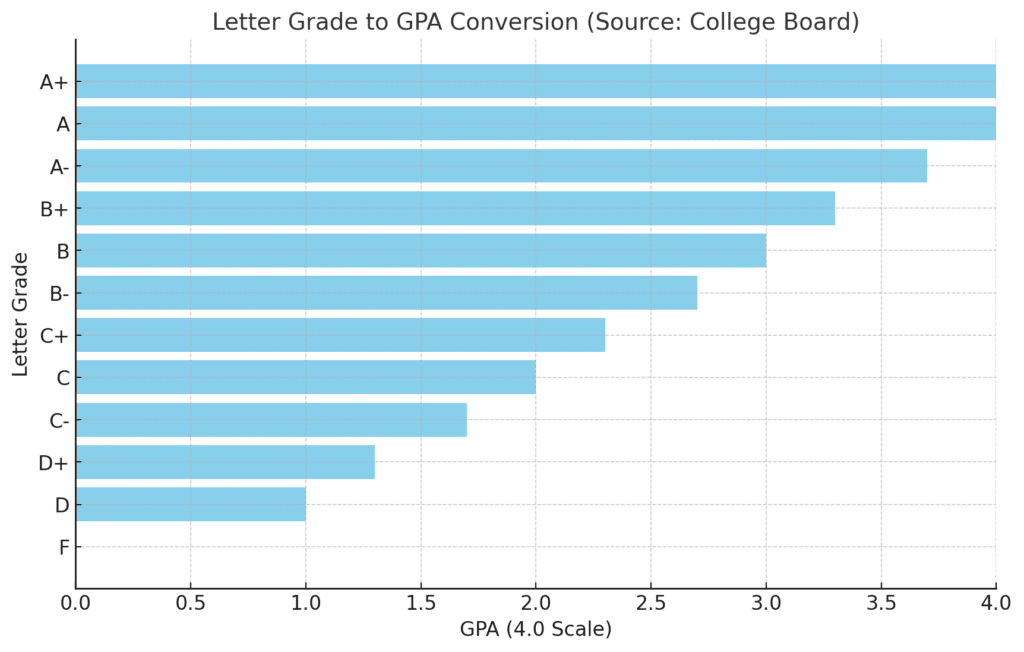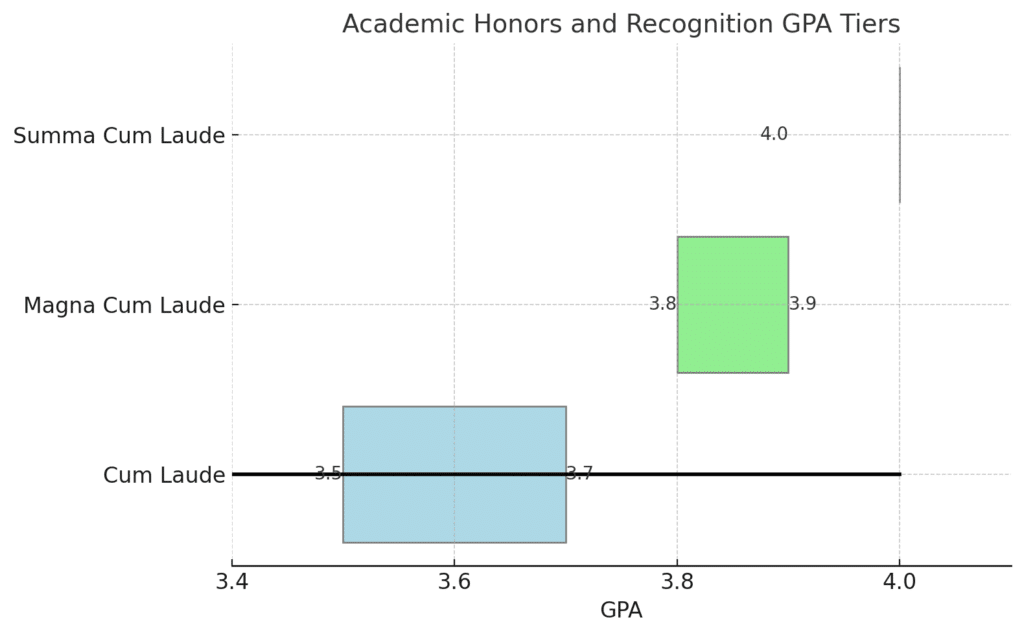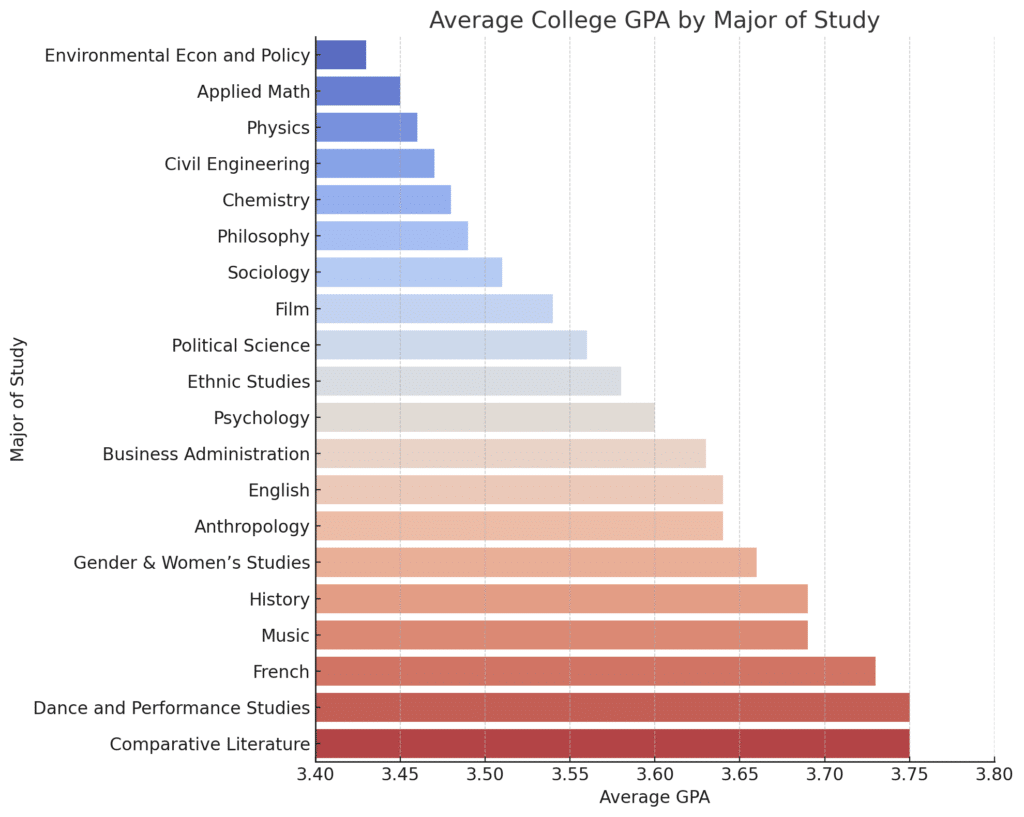What is a Good GPA in College?
Assessing what constitutes a good GPA in college is a multifaceted question that is contingent on various factors such as the academic field, the institution, and the individual goals of the student.
Table of Contents
The abbreviation GPA stands for Grade Point Average, a numeric representation of a student's academic performance.
Typically, the scale ranges from 0 to 4.0, although some institutions use a different scale or weighting for more advanced courses.
This average is a critical metric used by potential employers and graduate programs to assess a candidate's eligibility and preparedness.

Recognizing a 'good' GPA depends primarily on the context within which it is considered. Generally, a GPA closer to 4.0 is seen as excellent and often necessary for competitive academic or career opportunities. However, some colleges and universities consider a GPA between 3.0 to 3.5 as above average and sufficient for various programs and prospects.
The importance of a GPA can vary throughout a student's academic and professional journey, holding more significance in some phases than others.
Maintaining a high GPA requires consistent academic performance and is influenced by factors like course difficulty and extracurricular commitments. While a high GPA is beneficial, many institutions and employers also value practical experience, skills, and other achievements in conjunction with academic metrics.
Key Takeaways
- A good college GPA typically ranges from 3.0 to 4.0, with higher values viewed more favorably.
- Context matters; what's considered a good GPA can vary by field, institution, and individual goals.
- While a high GPA can enhance opportunities, consistent effort and complementary achievements are also valued.
Understanding GPA
GPA, or Grade Point Average, is a standardized measure of academic achievement in the U.S. education system. It quantifies a student's performance across their courses on a numerical scale.
The Basics of GPA
GPA is calculated by assigning a point value to each grade a student receives, then averaging these points across all taken courses. The point value is often on a 4.0 scale, where an 'A' typically earns 4 points, a 'B' earns 3 points, and so on. This system allows postsecondary institutions and employers to assess a student's performance quickly.
The GPA Scale Explained
- A: 4.0
- B: 3.0
- C: 2.0
- D: 1.0
- F: 0

The 4.0 scale GPA is the most commonly used grading system. However, there can be variations to this scale. For example, some institutions may use an 'A+' to denote a 4.3 or higher. The grade points are tallied and divided by the number of courses to calculate the cumulative GPA.
Weighted vs. Unweighted GPA
Unweighted GPA is the traditional way to measure academic performance, where all classes are considered on an equal level, regardless of their difficulty. The highest unweighted GPA is a 4.0, representing straight As in every class.
Weighted GPA, in contrast, takes the course difficulty into account by giving extra points for more challenging courses, such as honors or Advanced Placement (AP) classes. For instance, an 'A' in an AP class might count as a 5.0 instead of the standard 4.0. This system allows students to be rewarded for taking more difficult courses. Weighted GPAs can exceed a 4.0, reflecting the additional academic challenge.
Good GPA Criteria

A good GPA can vary based on several factors, including the field of study and the prestige of the institution. It is an important measure of student performance in college.
What Is Considered a Good GPA?
Generally, a Good GPA is considered to be above a 3.0 on a 4.0 scale, with a 3.5 or higher demonstrating strong academic performance. However, the distinction between a good and an excellent GPA may often depend on the level of academic rigor and the competitive landscape of a student’s field of study.
- 3.0 - 3.4: Adequate to Good
- 3.5 - 3.7: Good to Great
- 3.8 - 4.0: Excellent
Variances by Major and Institution
A good college GPA can be subject to variances by major and the institution. Students may find that science and engineering majors, which tend to be more challenging, might consider a lower GPA to be acceptable compared to less rigorous majors. For example:
- Engineering: 3.0 - 3.5 may still be competitive, given the demanding coursework.
- Humanities: 3.5+ may be expected for competitiveness.
Ivy League universities and other prestigious institutions may have higher expectations, with a good GPA considered to be closer to a 3.5 and above due to a more competitive student population.
Average GPA by Major
This chart highlights the varying grading standards and academic challenges across different fields of study. Comparative Literature and Dance and Performance Studies have the highest average GPAs, while Applied Math and Physics have lower average GPAs, suggesting more rigorous grading or inherent subject difficulty. The visual comparison illustrates the diverse academic experiences and grading tendencies across disciplines, providing insight into college rankings and education trends.
Data was compiled by the University of California-Berkeley
Impact of a Good GPA
The impact of maintaining a good GPA surfaces in various aspects of a student's academic and professional life. They can be a crucial factor in:
- Graduate School Admissions: A higher GPA can improve the likelihood of acceptance into competitive programs.
- Scholarship Opportunities: Many scholarships require a minimum GPA for eligibility.
- Career Prospects: Some companies have cutoffs for GPA when considering candidates for entry-level positions.
In conclusion, a good GPA can provide a considerable advantage in both academic endeavors and career prospects, and it should be pursued with diligence by college students.
GPA and College Admissions
A college GPA is a critical factor in college admissions, often reflecting a student's academic readiness and commitment. Admissions officers evaluate it amidst a host of other credentials to discern an applicant's potential.
GPA's Role in College Admissions
GPA serves as a standard measure of a student's academic success over time. Competitive colleges often seek applicants with high GPAs, as these can indicate a strong work ethic and intelligence. Average GPA expectations vary depending on the institution's selectivity. Data from the National Center for Education Statistics indicates that the average GPA of incoming freshmen is on the rise, a testament to the increasing competitiveness of college admissions.
How Admissions Officers Evaluate GPA
When deliberating on a GPA, admissions officers look beyond the raw number. They consider the difficulty of courses taken and grade trends throughout high school. A student who shows improvement over time, for instance, may stand out. Consistency in academic performance or excelling in advanced or honors courses can bolster an applicant's standing. Admissions officers also compare applicants' GPAs to the typical range at their institution to maintain a standard of academic excellence.
Beyond GPA: Holistic Admissions
Many colleges employ a holistic admissions process, wherein GPA is only one component of the evaluation. Other factors include:
- Personal Essays: Applicants can showcase their unique personality, experiences, and aspirations.
- Extracurricular Activities: Demonstrates engagement and leadership.
- Letters of Recommendation: Provide insight into the student's character and academic potential from the perspective of those who have worked with them closely.
This comprehensive review ensures that a student's full range of talents and achievements are considered, thereby providing opportunities for those who may have faced challenges that impacted their GPA.
GPA Effect on Opportunities
A student's Grade Point Average (GPA) can significantly influence their access to scholarships, acceptance into graduate programs, and employment opportunities after college.
Scholarships and Financial Aid
Many scholarships require applicants to maintain a specific minimum GPA, usually between 2.0 and 3.5, to qualify for financial assistance. The most competitive scholarships often seek students with a GPA of 3.5 or higher. Financial aid packages can also be contingent on meeting GPA benchmarks, which often align with maintaining satisfactory academic progress.
Graduate Schools and Future Education
Admission to graduate schools largely depends on a student's undergraduate GPA. Most graduate programs have a minimum GPA requirement, generally ranging from 2.5 to 3.0, with more competitive programs expecting a 3.5 or higher. A robust GPA can enhance a candidate's application and may be crucial when programs have limited enrollment.
Employment Prospects
Employers often consider a candidate's GPA as an indicator of their work ethic and capabilities. While not all employers emphasize GPA, certain industries and competitive roles may impose a baseline GPA for applicants, often around a 3.0. A high GPA can provide an edge in job applications, particularly when experience in the field is limited.
Improving and Maintaining GPA
To achieve a good GPA in college, students must adopt strategies that boost their academic performance. Success hinges on effective study habits, utilizing available resources, and finding a harmonious balance between academic and personal life.

Effective Studying Strategies
Students seeking to improve their GPA should set clear goals for their academic performance. By breaking down objectives into manageable tasks, they can track their progress more effectively. Utilizing a variety of studying techniques can also aide in understanding and retention of course material.
- Regular Review: Schedule brief review sessions each day for each subject.
- Active Learning: Engage with the material through discussions, teaching others, or applying concepts practically.
- Study Groups: Collaborate in small groups to deepen understanding and fill knowledge gaps.
- Practice Exams: Test oneself with past exams to identify areas needing more focus.
Utilizing Academic Resources
Academic resources are key for students who aim to enhance their GPA, especially if they are rebounding from a low GPA or facing academic probation.
| Resource | Benefit |
|---|---|
| Tutoring | Provides personalized assistance and focuses on student's weak points. |
| Professors' Office Hours | Opportunity to clarify doubts and gain deeper insights into coursework. |
| Academic Advising | Helps in selecting an appropriate course load and align extracurriculars. |
| Coaching | Offers structured guidance and accountability for consistent improvement. |
Leveraging these resources should occur early and often as they can lead to marked improvements in grades and understanding.
Finding Balance
A heavy course load or excessive involvement in extracurriculars can lead to burnout and impact academic performance. Students must strive to find a balance that allows them to maintain a healthy lifestyle while excelling academically.
- Recognize limits and do not overload schedules.
- Prioritize and allocate time wisely between studying, activities, and rest.
- Seek support from peers or counselors if feeling overwhelmed.
Maintaining "me time" is critical; it reinforces mental health and hence academic success.
GPA's Long-term Implications
The influence of a college GPA extends beyond academic life, impacting professional opportunities, eligibility for honors, and the strength of a resume.
GPA in Professional Life
In the job market, a strong GPA can be a signal to employers of a candidate's work ethic and capability. While not the sole determinant, a high GPA, particularly one above 3.5, may offer an advantage when seeking competitive positions. Conversely, a low GPA does not spell doom; many employers prioritize work experience, skills, and interview performance. Candidates with a less-than-stellar GPA can highlight other strengths on their resume and secure strong letters of recommendation to bolster their profiles.
Academic Honors and Recognition
Colleges often award academic honors based on GPA tiers, commonly designating cum laude (GPA typically between 3.5 to 3.7), magna cum laude (GPA typically between 3.8 to 3.9), and summa cum laude (GPA typically at or near 4.0) at graduation.

These distinctions are not only a mark of academic excellence but also serve as notable achievements on a resume or graduate school application. Meeting these graduation requirements can open doors to prestigious fellowships and honors societies, which can further enhance a graduate's credentials.
Building a Resume
A GPA, especially if it's a perfect GPA, can be prominently featured on a student's resume during the early college career. It serves as a testament to academic achievement and discipline. However, as one gains more experience, the GPA may become less prominent. Industry experience, skills, and accomplishments typically begin to carry more weight than academic metrics. Regardless of GPA, students are encouraged to focus on gaining new skills, certifications, and relevant experiences that can contribute to a robust and compelling resume.
College GPA - Frequently Asked Questions
Evaluating a college student's GPA requires an understanding of competitive benchmarks and how various factors can impact the perception of their academic standing. The following FAQs address key points on this topic.
What GPA is considered competitive for graduate school admissions?
Graduate programs often have specific GPA requirements, and a competitive GPA for these applications is typically above a 3.5. However, some more selective programs might expect even higher GPAs, approaching or at a 4.0.
How does majoring in engineering or computer science affect the perception of a college GPA?
Colleges and employers may perceive a lower GPA in rigorous fields like engineering or computer science more favorably compared to other disciplines due to the challenging coursework. However, a GPA above 3.0 is commonly expected to be a baseline for favorable perception.
What are the implications of having a 3.5 GPA in a college setting?
A 3.5 GPA is often considered a strong academic performance, signaling to both graduate schools and employers that a student has a solid understanding of their coursework. It may also qualify students for academic honors and scholarships.
How might a GPA around 3.0 to 3.3 range impact my academic opportunities in college?
A GPA in the range of 3.0 to 3.3 is generally seen as average to slightly above average. While it might limit opportunities for the most competitive scholarships and honors programs, many internships and career opportunities still regard this range as acceptable.
What are the potential consequences of maintaining a GPA below 2.5 in college?
A GPA below 2.5 might limit academic opportunities, such as eligibility for certain majors, internships, and extracurricular programs. It may raise concerns among potential employers or graduate admissions committees about a student’s academic abilities and work ethic.
In what ways can a student's GPA influence their post-college career opportunities?
A higher GPA can open doors to competitive job offers, higher starting salaries, and more selective graduate programs. However, many employers also consider work experience, internships, and skills, recognizing that a GPA is just one factor among many.






